The Apple iPad 2 Review
by Brian Klug, Anand Lal Shimpi & Vivek Gowri on March 19, 2011 8:01 PM ESTDisplay
The iPad 2 continues to use what boils down to the same 9.7 inch 1024x768 (XGA) LCD as the iPad 1. It isn’t the 300 or close PPI display that many speculated would launch with the iPad 2. Instead, for the most part, it’s identical to the 132 PPI panel which shipped in the first iPad.
Side by side the two have very similar brightness, black level, and contrast. That said, we’ve noticed some differences in the numbers between the four iPad 2s spread among us. Two are 16 GB WiFi models, one is an AT&T WiFi - 3G, and another is Verizon WiFi - 3G. Each have slightly different brightness and black levels, and correspondingly different contrast as well.
| Display Quality Comparison | |||||
| White Level | Black Level | Contrast Ratio | |||
| Apple iPad 2 #1 (AT&T 3G) | 406 nits | 0.42 nits | 966:1 | ||
| Apple iPad 2 #2 (VZW 3G) | 409 nits | 0.49 nits | 842:1 | ||
| Apple iPad 2 #3 (WiFi) | 352 nits | 0.45 nits | 778:1 | ||
| Apple iPad 2 #4 (WiFi) | 354 nits | 0.41 nits | 859:1 | ||
After looking at the numbers we’ve collected, there seems to be a pretty obvious trend emerging. The WiFi iPads seem to have a brightness closer to 350 nits, whereas the 3G models have brightness levels at 400 nits. It seems entirely possible that there are either multiple suppliers for these panels, or different batches with differing performance characteristics between the WiFi and 3G manufacturing lines.
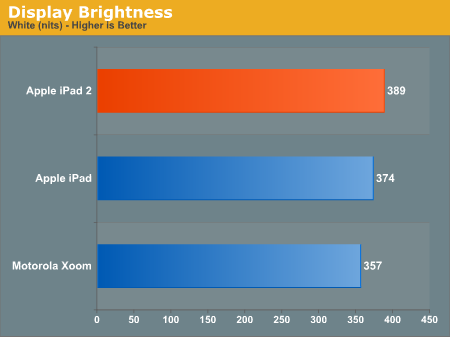
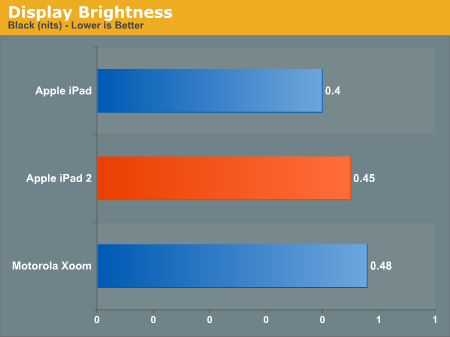
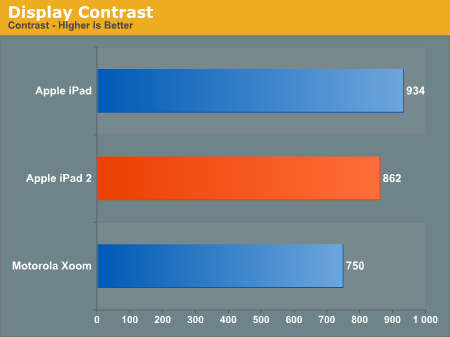
We measured white point on the iPad 2 with an X-Rite i1Pro and found that (at least my AT&T 3G model) it was right at 6604K, very close to D65 and good performance. Conversely, the iPad 1 WiFi on hand measured around 6908K which is admittedly still acceptable, but not quite as good. In reality, there will probably be a large amount of drift in color temperature across different panel suppliers and batches, just like we saw with the Verizon iPhone 4’s noticeably blue display.
Indoor viewing angles on the iPad 2’s IPS display are still excellent. Uniformity is also good, with one caveat.
There’s been a lot of talk about backlight bleeding on the iPad 2. Initially, I didn’t notice any backlight bleed on my iPad 2, however I now notice a small blotch where backlight bleeds in the bottom right corner. Pressing on the glass surface, I can change the intensity of this backlight bleed, which would imply that the bleed is due to stresses in the glass and TFT like you’d see if you were to press on a panel. It’s not bad at all, especially compared to some of the worst-affected examples I’ve seen in forums online, but hopefully this gets worked out with better manufacturing. Oddly enough, side by side with the iPad 2 the iPad 1 also shows some noticeable light bleed.
Outdoor glare and viewing angles are essentially unchanged. Subjectively the iPad 2 seems a tiny bit better, perhaps thanks to the slightly thinner glass and adhesion process, but it’s still hard to read anything outside in direct sunlight.
Compared to the Xoom, the iPad 2 is more usable outdoors:








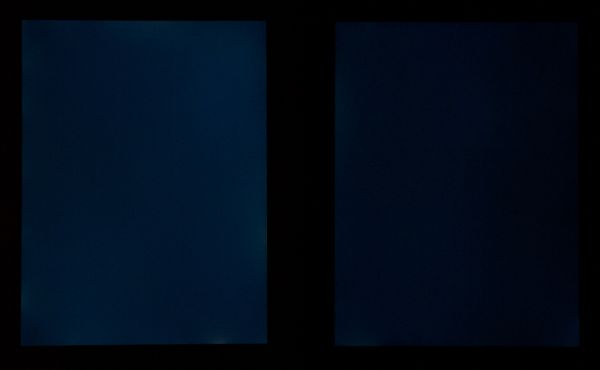

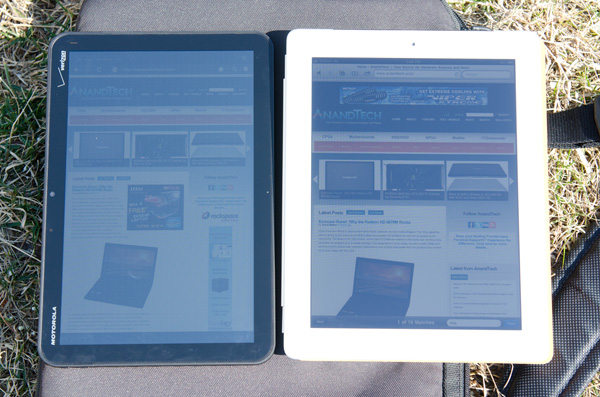








189 Comments
View All Comments